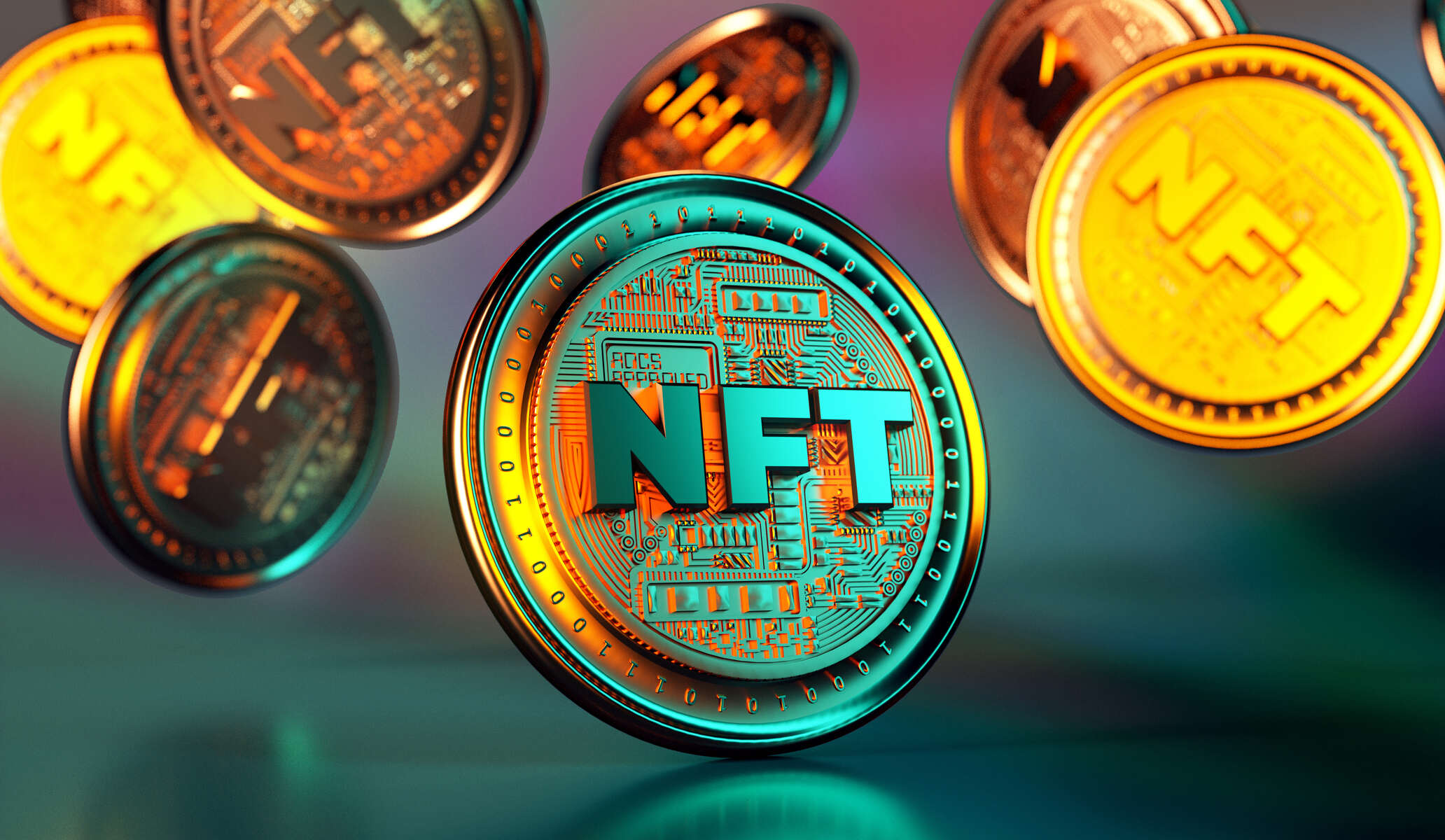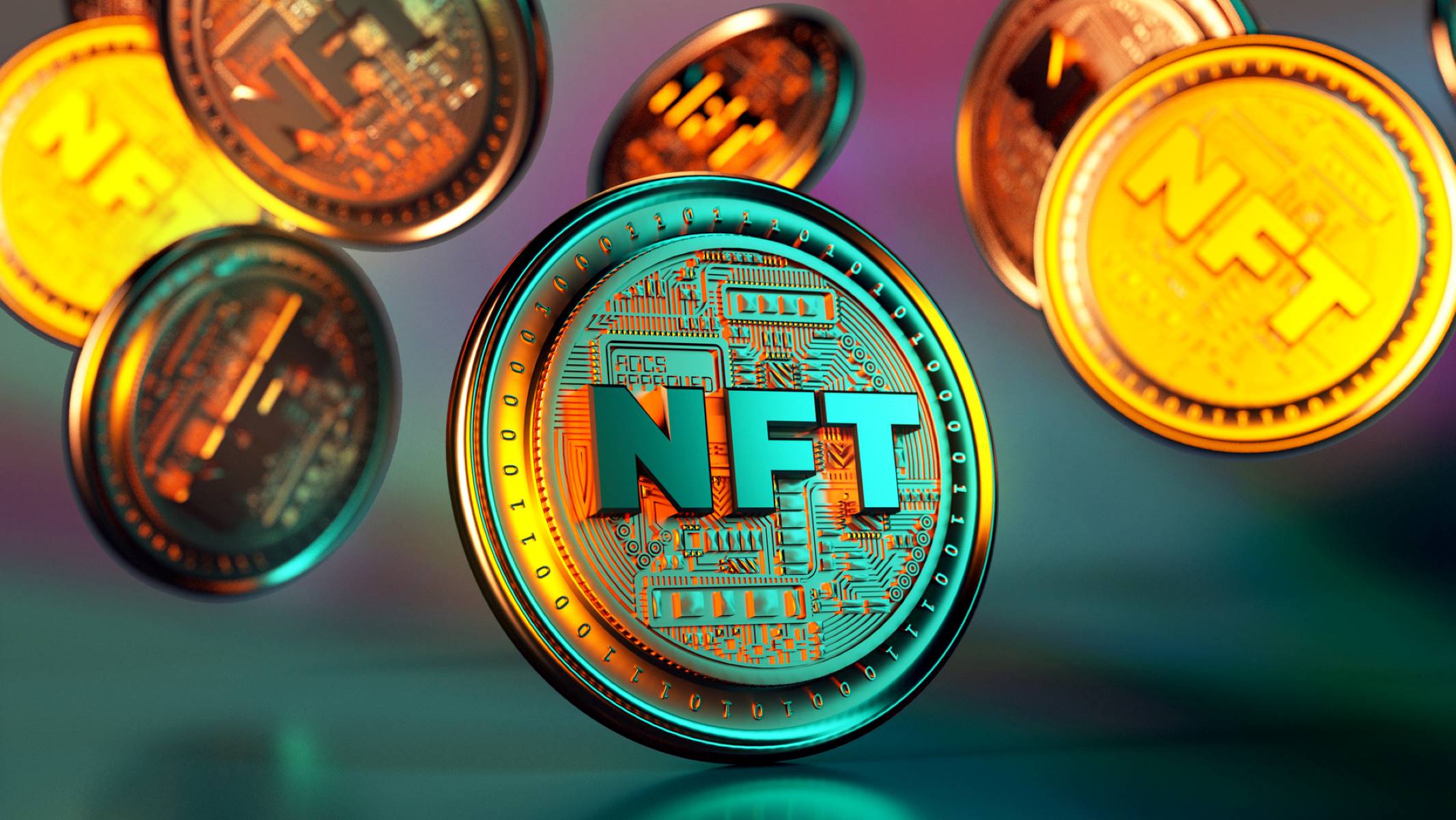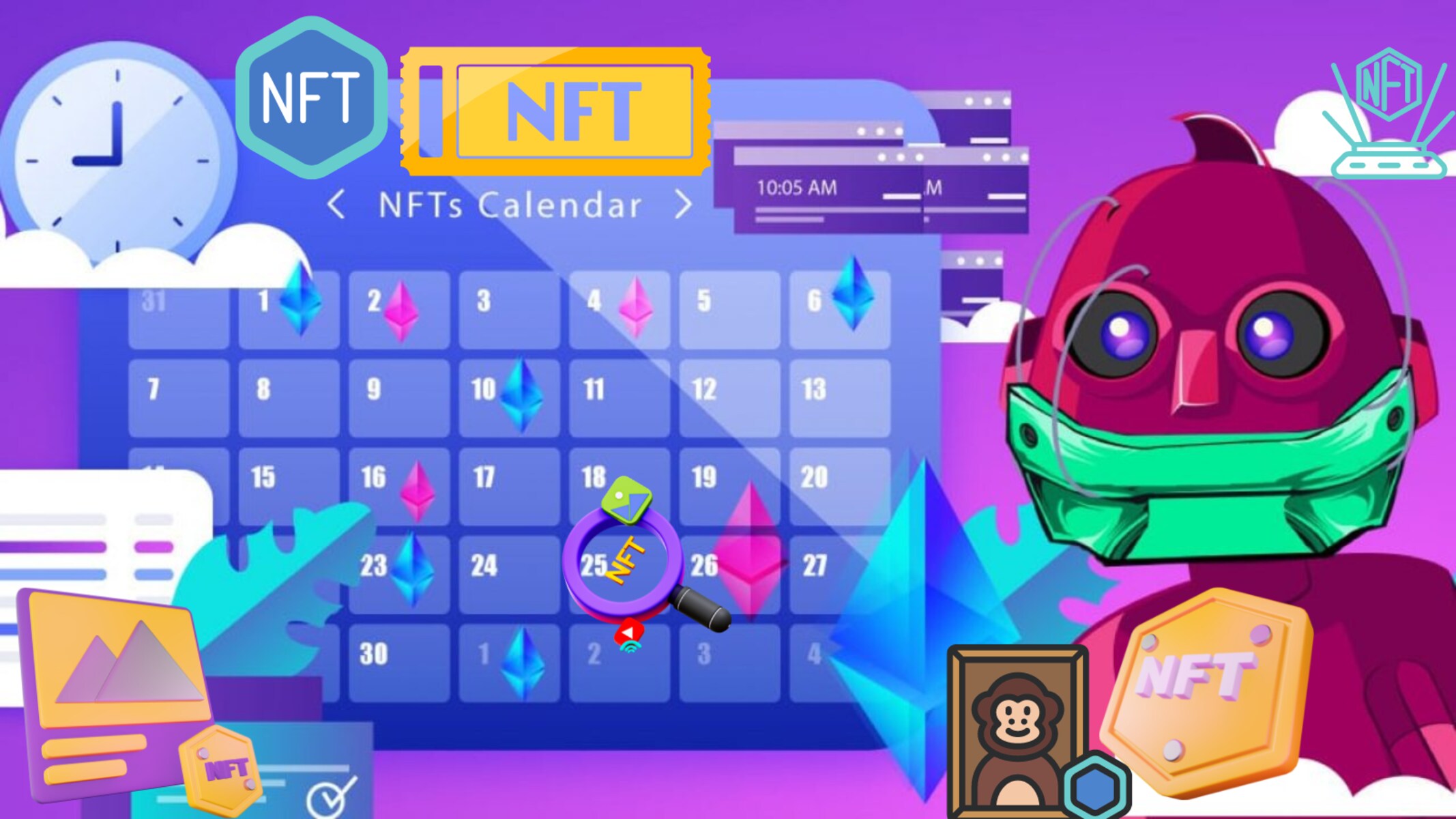Introduction
Welcome to the world of NFT cryptos! In recent years, there has been a significant rise in the popularity and buzz surrounding this unique form of digital asset. NFT, which stands for Non-Fungible Token, has taken the world by storm, captivating the attention of artists, collectors, and investors alike.
But what exactly is a NFT crypto? How does it work? And why has it gained so much traction in such a short amount of time? In this article, we will explore the fascinating world of NFT cryptos, uncovering their unique features, benefits, challenges, and popular platforms.
Essentially, a NFT crypto is a digital asset that represents ownership or proof of authenticity of a particular item, whether it be a piece of art, a music album, a video, a virtual real estate, a game item, or even a tweet. Unlike cryptocurrencies such as Bitcoin or Ethereum, which are fungible and can be exchanged for one another, NFTs are one-of-a-kind and cannot be replicated or interchanged with other tokens.
The underlying technology behind NFT cryptos is blockchain, a decentralized ledger system that ensures transparency, security, and immutability. Each NFT is recorded on the blockchain, providing a public record of ownership and transaction history. This allows artists and creators to establish provenance and control over their work, while collectors and investors can verify the authenticity and rarity of the assets they acquire.
One of the key factors contributing to the rise of NFT cryptos is the concept of digital scarcity. In the physical world, scarcity is often inherent to art, collectibles, and rare items, which can drive up their value. With NFTs, scarcity can be artificially created, as only a limited number of tokens can be minted for a specific artwork or digital item. This scarcity, combined with the blockchain’s irrefutable proof of ownership, has created a new market for digital ownership and has revolutionized the way we perceive and trade digital assets.
What Is a NFT Crypto?
A NFT crypto, also known as a Non-Fungible Token, is a type of digital asset that represents ownership or proof of authenticity of a specific item or piece of content. Unlike cryptocurrencies such as Bitcoin or Ethereum, which are fungible and can be exchanged on a one-to-one basis, NFTs are unique and cannot be interchanged with other tokens.
Think of a NFT crypto as a digital certificate of ownership or a digital deed that can be associated with various types of digital and physical assets. These assets can include digital artworks, music albums, videos, virtual real estate, in-game items, and even tweets. The NFT acts as a digital representation of the asset and provides verifiable proof of ownership on the blockchain.
The technology behind NFT cryptos is blockchain, a decentralized and transparent digital ledger that records all transactions and ownership details. By leveraging blockchain technology, NFTs ensure transparency, immutability, and security. Every NFT is uniquely identified and has a record of its ownership history, making it extremely difficult to alter or counterfeit.
When an artist or creator mints a NFT crypto, they can specify various parameters, such as the number of tokens available, royalty fees, and resale conditions. This allows the creator to retain some control over their work and earn ongoing royalties when the NFT is resold in the secondary market. Collectors and investors can purchase NFTs through various platforms and marketplaces, using cryptocurrencies as a medium of exchange.
It’s important to note that the value of a NFT crypto is largely driven by its uniqueness, provenance, and perceived value. Factors such as the reputation and popularity of the artist, the scarcity of the asset, and the demand from collectors and enthusiasts can all impact the price and marketability of a NFT. It’s a highly dynamic and evolving market that has gained significant attention and participation from artists, collectors, celebrities, and investors.
While NFTs have gained popularity in the art world, their use cases extend beyond just digital artwork. Musicians can tokenize their albums or singles, allowing fans to own a piece of their favorite music. Virtual reality creators can sell virtual real estate or in-game assets, providing players with unique digital experiences. Even tweets from celebrities or influential figures can be tokenized and sold as NFTs.
Overall, NFT cryptos have opened up a new frontier of digital ownership and have revolutionized the way we perceive, trade, and value digital assets. They offer a unique combination of verifiable ownership, scarcity, and potential for financial gain, making them an exciting and intriguing concept in the world of blockchain and cryptocurrency.
How Does NFT Crypto Work?
NFT cryptos operate on the principle of blockchain technology, utilizing decentralized digital ledgers to establish proof of ownership and ensure the uniqueness of digital assets. The process of how NFT cryptos work can be broken down into several key steps.
The first step in the creation of a NFT crypto is the minting process. Artists, creators, or content owners mint their assets by converting them into NFTs. This involves registering the asset on a blockchain platform and generating a unique cryptographic token that represents ownership rights. The minting process typically involves specifying important details such as the number of tokens available, description, metadata, and any associated royalty fees.
Once the NFT crypto is created, it is recorded and stored on the blockchain. This decentralized ledger provides transparency, security, and immutability by ensuring that all transactions and ownership details are publicly accessible and verifiable. Every NFT has a unique identifier associated with it, making it distinguishable from other tokens on the blockchain.
Once the NFT is minted, it can be bought, sold, or traded on various NFT marketplaces and platforms. These platforms act as intermediaries, facilitating the transaction between buyers and sellers. Transactions are usually conducted using cryptocurrencies, most commonly Ethereum, due to its compatibility with smart contracts. The ownership of the NFT is transferred from the seller to the buyer, and the transaction details are updated on the blockchain.
One of the key advantages of NFT cryptos is their programmability. Smart contracts, which are self-executing contracts with predefined rules, enable creators to receive royalty fees whenever their NFTs are resold in the secondary market. These royalty fees are typically a percentage of the resale price and are automatically transferred to the creator’s wallet each time the NFT is sold, ensuring ongoing revenue streams for artists and content creators.
Another important aspect of NFT cryptos is their interoperability. This means that NFTs can be utilized across different platforms, applications, and virtual worlds. For example, a digital artwork purchased as an NFT can be displayed in virtual reality galleries, used as avatars in video games, or even leveraged as collateral in decentralized finance (DeFi) loans. This interoperability expands the possibilities for NFT owners and enhances the utility value of their digital assets.
It’s worth mentioning that the environmental impact of NFTs, particularly in terms of energy consumption, has been a topic of concern. Ethereum, the most widely used blockchain for NFTs, currently operates on a proof-of-work consensus mechanism, which requires significant computational power. However, efforts are underway to transition to a more sustainable and efficient proof-of-stake mechanism, which would alleviate these environmental concerns.
In summary, NFT cryptos work by leveraging blockchain technology to establish proof of ownership and uniqueness for digital assets. Through minting, recording on the blockchain, and trading on NFT marketplaces, individuals can buy, sell, and trade NFTs representing various digital items. Smart contracts enable creators to receive royalties from secondary market sales, while the interoperability of NFTs expands their utility and potential applications.
The Unique Features of NFT Cryptos
NFT cryptos possess several unique features that set them apart from other digital assets and traditional forms of ownership. These features contribute to their growing popularity and adoption in various industries. Let’s explore the key characteristics that make NFTs so distinctive.
Uniqueness: Unlike cryptocurrencies such as Bitcoin or Ethereum, which are fungible and interchangeable, NFTs are one-of-a-kind. Each NFT has a distinct identifier and represents a specific asset or piece of content. This uniqueness is ensured by the underlying blockchain technology, which prevents replication or duplication of NFTs.
Provenance: NFTs provide a transparent and immutable record of ownership and transaction history. The blockchain technology used in NFTs allows creators and owners to establish the provenance of their digital assets. It creates a verifiable chain of custody, ensuring that the origin and authenticity of the asset can be traced back to the original creator.
Digital Scarcity: NFTs introduce the concept of digital scarcity, allowing artists and creators to artificially limit the supply of their digital assets. By limiting the availability of NFTs, creators can enhance their value and rarity. The scarcity factor plays a crucial role in determining the market demand and price of NFTs.
Royalty Mechanism: NFTs use smart contracts, which enable creators to receive royalties each time their NFTs are sold in the secondary market. This eliminates the need for intermediaries or middlemen and ensures that artists continue to benefit from the increasing value of their digital creations even after the initial sale.
Interoperability: NFTs can be utilized across different platforms, applications, and virtual worlds. This interoperability means that a single NFT can have various uses and be integrated into different environments. For example, an NFT representing a digital artwork can be showcased in virtual galleries, used as an avatar in video games, or even leveraged as collateral in decentralized finance (DeFi) transactions.
Enhanced Ownership Experience: NFTs offer unique ownership experiences that were not possible with traditional forms of ownership. NFT owners can showcase their digital assets in virtual galleries, share their collections with others, and participate in virtual events and exhibitions. The digital nature of NFTs allows for a more interactive and engaging ownership experience.
These distinctive features of NFT cryptos have attracted artists, collectors, and investors to explore the world of digital ownership. The combination of uniqueness, provenance, digital scarcity, royalty mechanisms, interoperability, and enhanced ownership experiences has created a new paradigm for the exchange and appreciation of digital assets.
Benefits and Use Cases of NFT Cryptos
NFT cryptos offer a range of benefits and have opened up new and exciting use cases across various industries. Let’s explore some of the key advantages and practical applications of NFTs.
1. Ownership and Authenticity: NFTs provide a secure and transparent way to establish ownership and authenticity of digital assets. Artists and creators can prove the originality and provenance of their work, while collectors can verify the authenticity of the assets they acquire.
2. Revenue Generation: NFTs allow creators to monetize their digital assets in a unique way. Through the use of smart contracts and royalties, artists can earn ongoing revenue whenever their NFTs are resold in the secondary market. This provides a new stream of income for artists and incentivizes them to create more valuable and unique digital assets.
3. Accessible Art Market: NFTs have democratized the art market by providing an accessible platform for artists of all backgrounds. Artists no longer need to navigate the traditional art market or rely on galleries and agents to showcase and sell their work. NFTs enable artists to reach a global audience directly and retain more control over their creative process.
4. Enhanced Collecting Experience: NFTs offer collectors a new and immersive way to engage with their favorite art, music, or digital collectibles. Collectors can showcase their NFTs in virtual galleries, interact with other collectors, and participate in virtual events and exhibitions. The digital nature of NFTs allows for a more dynamic and interactive collecting experience.
5. Tokenized Real-World Assets: NFTs have the potential to tokenize real-world assets, such as real estate, luxury goods, or intellectual property. This enables fractional ownership, making it easier for individuals to invest in high-value assets that were previously inaccessible. NFTs can also facilitate the seamless transfer and trading of these assets.
6. Gaming and Virtual Worlds: NFTs have revolutionized the gaming industry by allowing players to own and trade in-game assets as NFTs. This gives players true ownership and control over their digital possessions, enhancing the gaming experience. NFTs also have applications in virtual worlds, where users can buy and sell virtual real estate, clothing, and other virtual assets.
7. Digital Identity and Certification: NFTs can be used to establish digital identity and certification. For example, educational institutions can issue NFTs as digital certificates or diplomas, providing a secure and tamper-proof way to verify educational qualifications. NFTs can also serve as proof of membership, access to exclusive events, or rewards for community participation.
NFT cryptos have unlocked a multitude of possibilities, offering benefits for artists, creators, collectors, investors, and even industries beyond the art world. The ability to establish ownership, generate revenue, enhance collecting experiences, tokenize real-world assets, transform gaming experiences, provide digital identity, and certification are just some of the ways NFTs are reshaping the digital landscape.
Challenges and Risks of NFT Cryptos
While NFT cryptos have seen tremendous growth and popularity, there are also challenges and risks associated with this emerging market. It’s important to be aware of these factors before diving into the world of NFTs. Let’s explore some of the main challenges and risks of NFT cryptos.
1. Market Volatility: The NFT market has experienced significant price volatility, with prices of certain NFTs soaring to astronomical levels before experiencing sharp declines. This volatility can make it difficult to determine the true value of NFT assets and can lead to potential financial losses for investors and speculators.
2. Lack of Regulation: As the NFT market is still relatively new and evolving, there is a lack of regulatory oversight. This lack of regulation exposes investors to potential scams, fraud, and market manipulation. It is essential to exercise caution when engaging in NFT transactions and conduct thorough research before investing significant sums of money.
3. Environmental Impact: The energy consumption associated with some blockchain networks, such as Ethereum, has raised concerns about the environmental impact of NFTs. The process of minting and trading NFTs can consume a substantial amount of energy. However, efforts are being made to address this issue by transitioning to more energy-efficient blockchain technologies.
4. Copyright and Intellectual Property Issues: The NFT market has sparked debates over copyright and intellectual property. While purchasing an NFT may grant ownership of the digital asset, it does not necessarily confer copyright or intellectual property rights associated with the underlying content. It’s important for creators and buyers to navigate these issues and ensure that proper rights and permissions are obtained.
5. Sustainability of Market Demand: The NFT market has gained significant attention and participation from artists, collectors, and investors. However, there are concerns about the sustainability of market demand over the long term. The market may experience fluctuations as trends change and new technologies or platforms emerge.
6. Potential for Fraudulent Listings: The decentralized nature of NFT marketplaces can make it easier for fraudulent listings to appear. It’s crucial for buyers to verify the authenticity of the NFT and conduct due diligence before making a purchase. Additionally, it’s important to be cautious of phishing attempts and ensure the security of digital wallets and private keys.
7. Scalability and Infrastructure Challenges: The current infrastructure supporting NFTs, particularly on Ethereum, has faced scalability challenges during periods of high demand. This can result in network congestion, high transaction fees, and slow transaction processing times. These scalability issues need to be addressed to ensure a smooth and user-friendly experience for participants in the NFT market.
While NFT cryptos present exciting opportunities, it’s important to approach the market with caution and be mindful of the potential challenges and risks associated with it. By educating oneself, conducting thorough research, and practicing due diligence, individuals can navigate the NFT space more effectively and make informed decisions.
Popular NFT Crypto Platforms and Marketplaces
The world of NFT cryptos is supported by various platforms and marketplaces that facilitate the creation, trading, and ownership of NFT assets. These platforms have gained significant popularity and are instrumental in the growth of the NFT market. Let’s take a look at some of the most popular NFT crypto platforms and marketplaces.
1. OpenSea: OpenSea is one of the largest and most well-known NFT marketplaces. It offers a wide range of digital assets, including artwork, virtual real estate, domain names, and in-game items. OpenSea provides a user-friendly interface, allowing buyers and sellers to seamlessly trade NFTs on the Ethereum blockchain.
2. Rarible: Rarible is a decentralized marketplace built on the Ethereum blockchain. It allows users to create, buy, and sell NFTs directly without any intermediaries. Rarible also incorporates a governance system, giving users the ability to influence the platform’s development and decision-making processes.
3. SuperRare: SuperRare is a curated marketplace focused on digital artwork. It showcases unique and limited edition art pieces from artists around the world. By leveraging blockchain technology, SuperRare ensures the authenticity and provenance of the artwork while providing artists with a platform to monetize their creations.
4. NBA Top Shot: NBA Top Shot is an NFT platform created in partnership with the National Basketball Association (NBA) and its players’ association. It offers officially licensed NBA collectible moments, allowing fans to own and trade iconic basketball highlights as NFTs. NBA Top Shot has gained significant popularity among sports enthusiasts and collectors.
5. Axie Infinity: Axie Infinity is a blockchain-based game that allows players to collect, breed, and battle virtual creatures called Axies. These Axies are NFTs that can be bought, sold, and traded on the platform. Axie Infinity has gained a strong following and has become one of the leading blockchain-based gaming projects.
6. Decentraland: Decentraland is a virtual reality metaverse built on the Ethereum blockchain. It allows users to explore and interact with a decentralized virtual world. Users can buy, sell, and trade virtual land, art, wearables, and other digital assets, all represented as NFTs.
7. Async Art: Async Art is an innovative platform that allows artists to create multi-layered, programmable artworks. These artworks can change over time or in response to external factors. Each layer of the artwork is represented as an NFT, allowing collectors to own and influence different aspects of the piece.
These platforms and marketplaces represent just a fraction of the vibrant NFT ecosystem. As the market continues to evolve, new platforms and marketplaces are being developed, offering unique features and opportunities for artists, collectors, and investors to participate in the world of NFT cryptos.
Investing in NFT Cryptos
Investing in NFT cryptos can be an exciting and potentially lucrative opportunity for individuals looking to participate in the growing digital asset market. However, it’s essential to approach NFT investments with caution and understand the risks involved. Here are some key considerations for investing in NFT cryptos.
1. Do Your Research: Before investing in NFTs, take the time to educate yourself about the market, trends, and potential opportunities. Stay informed about the latest developments, popular artists, and emerging NFT projects. Understanding the dynamics of the NFT market will help you make more informed investment decisions.
2. Assess the Potential Value: When considering an NFT investment, evaluate the potential value and growth prospects of the asset. Factors such as the reputation and popularity of the artist, scarcity of the NFT, historical sales data, and the uniqueness of the asset can influence its value. Conduct thorough research and analysis to gauge the investment potential of the NFT.
3. Diversify Your Portfolio: As with any investment, diversification is key. Consider investing in a variety of NFTs across different artists, genres, and platforms. Diversifying your portfolio can help mitigate risks and maximize potential returns. Just like in traditional investments, diversification helps spread the impact of market fluctuations.
4. Understand the Blockchain and Platform: Familiarize yourself with the blockchain technology and platform on which the NFT operates. Ethereum is the most widely used blockchain for NFTs, but other networks, such as Binance Smart Chain and Flow, are gaining traction. Understand the fees, transaction times, and implications of the chosen blockchain network and the reputation and security of the NFT platform.
5. Consider Long-Term Potential: NFT investments can offer long-term value, particularly if you believe in the growth and adoption of digital ownership. Consider the potential future demand for the NFT you are considering, and evaluate whether it holds value beyond speculative trends. Assess the utility and versatility of the NFT, as well as its potential for integration into virtual worlds, gaming, or other emerging technologies in the digital space.
6. Beware of Scams and Fraud: The booming NFT market has attracted scammers and fraudsters. Be cautious of counterfeit NFTs, fake listings, and phishing attempts. Conduct your due diligence, verify the authenticity of the NFT and the reputation of the seller or platform, and ensure the security of your digital wallet and private keys.
7. Risk Management: NFT investments carry inherent risks, including market volatility and the potential for financial loss. Only invest what you can afford to lose and set a budget for your NFT investments. Consider engaging with trusted sources, seeking advice from experts, and staying updated on industry news to make informed decisions and manage your risk exposure.
Investing in NFT cryptos can be a rewarding experience, but it’s crucial to approach it with a level-headed mindset and thorough research. By understanding the market, diversifying your portfolio, evaluating potential value, and staying vigilant against scams, you can navigate the NFT investment landscape more effectively.
Conclusion
With the rise of NFT cryptos, we have witnessed a paradigm shift in the way we perceive, trade, and value digital assets. NFTs have brought a new level of transparency, ownership, and scarcity to the digital world, empowering artists, creators, collectors, and investors in unprecedented ways.
From digital artworks to virtual real estate, NFTs offer unique opportunities for artists to monetize their creations, collectors to engage with their favorite content, and investors to participate in the growing digital asset market. The underlying blockchain technology ensures the authenticity and provenance of these assets, while smart contracts enable creators to receive ongoing royalties from secondary market sales.
While NFTs present exciting opportunities, it’s important to approach the market with caution. Challenges and risks such as market volatility, lack of regulation, environmental concerns, and copyright issues require careful consideration. Conducting thorough research, diversifying your portfolio, and practicing risk management are critical to navigating the NFT landscape successfully.
The popularity of NFT cryptos has led to the emergence of various platforms and marketplaces where individuals can create, buy, and sell NFTs. OpenSea, Rarible, SuperRare, NBA Top Shot, Axie Infinity, Decentraland, and Async Art are just a few examples of the platforms driving the NFT market forward.
The future of NFT cryptos holds immense potential for further exploration and innovation. As technology evolves, we can expect advancements in scalability, sustainability, and interoperability. NFTs may extend to new industries and use cases, revolutionizing the way we interact with digital assets and the ownership experience.
As with any investment, it’s crucial to exercise caution, conduct due diligence, and manage risk when diving into the world of NFT cryptos. Educating oneself, staying informed, and engaging with reputable sources can help navigate the complexities of the market and make informed investment decisions.
In summary, NFT cryptos have ushered in a new era of digital ownership, transforming the art industry, gaming, collectibles, and beyond. By leveraging the power of blockchain technology, NFTs offer unprecedented transparency, authenticity, and opportunities for artists, creators, collectors, and investors. The world of NFTs is one that continues to evolve, presenting both challenges and exciting potentials for those willing to embark on this digital journey.

























